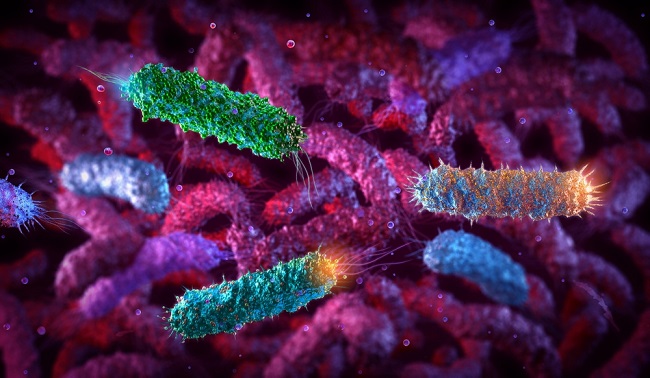Ten organisations account for half of all animal research in Great Britain in 2024
Published: 23 October 2025
Understanding Animal Research (UAR) has published a list of the ten organisations that carried out the highest number of animal procedures – those used in medical, veterinary, and scientific research – in Great Britain in 2024.
Understanding Animal Research (UAR) has published a list of the ten organisations that carried out the highest number of animal procedures – those used in medical, veterinary, and scientific research – in Great Britain in 2024. These statistics are freely available on the organisations’ websites as part of their ongoing commitment to transparency and openness around the use of animals in research.
This list coincides with the publication of the Home Office’s report on the statistics of scientific procedures on living animals in Great Britain in 2024.
The ten listed organisations were responsible for 1,379,399 procedures, 54% (more than half) of the 2,637,578 procedures carried out on animals for scientific research in Great Britain in 2024*. Of these 1,379,399 procedures, more than 99% were carried out on mice, fish, rats, and birds and 82% were classified as causing pain equivalent to, or less than, an injection.
The ten organisations are listed below alongside the total number of procedures they carried out in 2024. Each organisation’s name links to its animal research webpage, which includes more detailed statistics. Case studies explaining how animal research has been used in recent medical research are also provided in the Notes to Editors section. This is the tenth consecutive year that organisations have come together to publicise their collective statistics and examples of their research.
|
Organisation |
Number of Procedures (2024) |
|
200,055 |
|
|
199,730 |
|
|
190,448 |
|
|
175,687 |
|
|
140,602 |
|
|
136,862 |
|
|
106,300 |
|
|
99,509 |
|
|
81,252 |
|
|
48,954 |
|
|
TOTAL |
1,379,399 |
Seventy-two organisations have proactively published their 2024 animal research statistics.
UAR has also produced a list (see appendix) of 72 organisations in the UK that have publicly shared their 2024 animal research statistics. This includes organisations that carry out or fund animal research.
All organisations are committed to the ethical framework called the ‘3Rs’ of replacement, reduction and refinement. This means avoiding or replacing the use of animals where possible, minimising the number of animals used per experiment and optimising the experience of the animals to improve animal welfare. However, as institutions expand and conduct more research, the total number of animals used can rise even if fewer animals are used per study.
All organisations listed are signatories to the Concordat on Openness on Animal Research in the UK, which commits them to being more open about the use of animals in scientific, medical and veterinary research in the UK. More than 130 organisations have signed the Concordat, including UK universities, medical research charities, research funders, learned societies and commercial research organisations.

At the University of Glasgow, research is being done into Shiga toxin-producing E. coli (STEC), a significant threat to public health, with an estimated 2.8 million cases globally per year. STEC is most often transmitted by eating contaminated food, or undercooked meat, and produces toxins that can make people very ill, with symptoms including bloody diarrhoea, stomach cramps and fever, lasting up to 14 days. Modern food supply infrastructure and climate change is thought to be increasing the incidence of large, multinational STEC outbreaks.
Treatment options for STEC remain limited and difficult, as antibiotics can make the disease worse by releasing a potent toxin into the infected person’s gut and disrupting beneficial gut bacteria
At the University of Glasgow researchers have taken an important step toward the development of a potential new treatment for STEC. Recent research using mouse models enabled them to show that the use of an antivirulence drug called Aurodox could be an effective treatment. Aurodox works by inhibiting the bacteria from being able to attach to the gut, therefore blocking disease.
The work suggest that Aurodox may influence the gut microbiome in a beneficial way, unlike traditional antibiotics, making it a promising alternative for treating STEC without major disruptions to gut bacteria. Proving the efficacy of Aurodox in mice marks a significant milestone, paving the way for more urgently needed research in this area.
David Duncan, University of Glasgow Chief Operating Officer, said: “Research using animals makes an important contribution to the treatment and cure of major human diseases and viruses, including cancers, Alzheimer’s Disease, flu and COVID-19. At the University of Glasgow animals are used in research only where it is essential, and we remain dedicated to the principles of reduction, refinement, and replacement.
“The University is committed to the development of alternative methods – such as computer modelling, tissue culture, cell and molecular biology, and research with human material – but some work involving animals must continue for further advances in medical sciences to be made. All research undertaken on animals is conducted under strict ethical and welfare guidelines, under licence by the Home Office."
Enquiries: ali.howard@glasgow.ac.uk or elizabeth.mcmeekin@glasgow.ac.uk
First published: 23 October 2025

